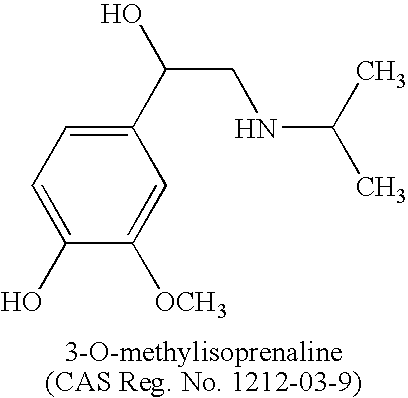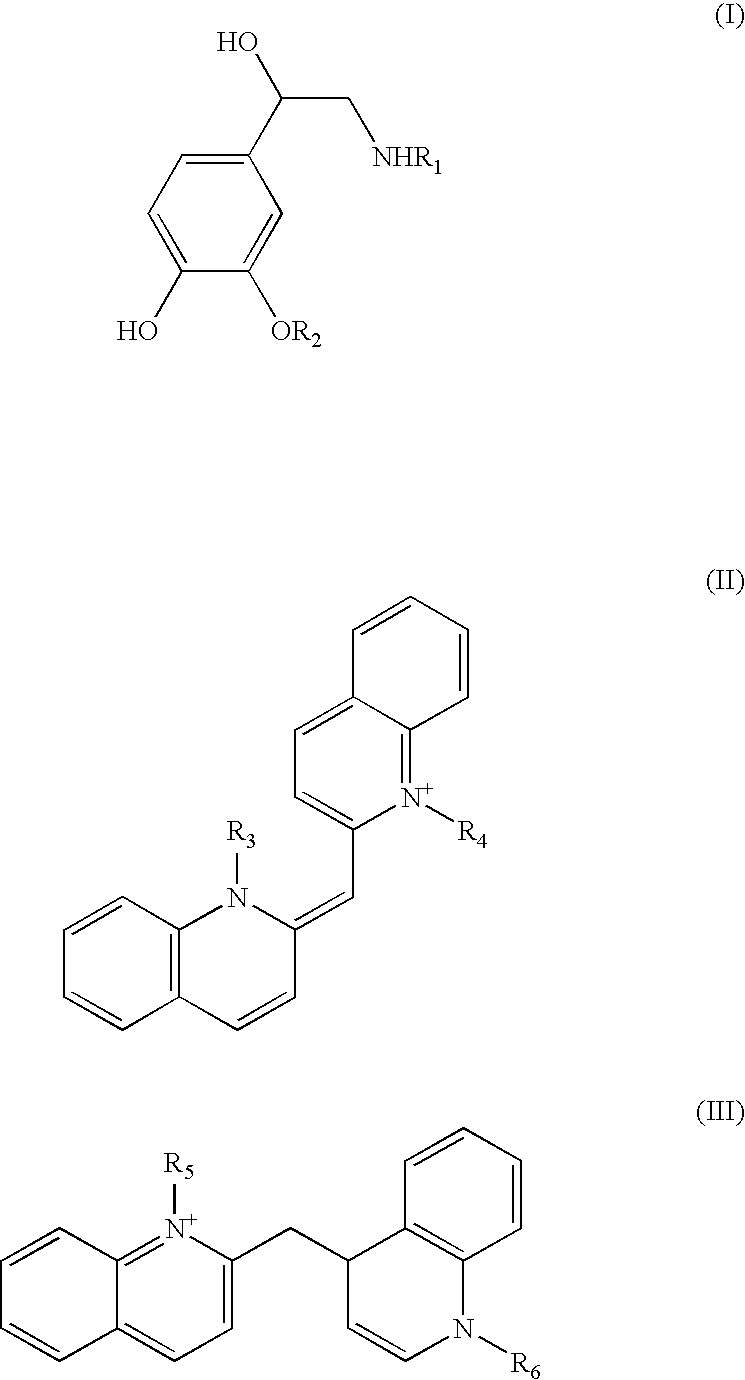Methods for the Treatment of ADHD and Related Disorders
- Summary
- Abstract
- Description
- Claims
- Application Information
AI Technical Summary
Benefits of technology
Problems solved by technology
Method used
Image
Examples
Embodiment Construction
[0025]The catecholamine neurotransmitters, dopamine and norepinephrine, are released from presynaptic neurons into the synapse. The primary medications that are prescribed to treat ADHD and related behavioral disorders, such as methylphenidate, dextroamphetamine, atomoxatine, desipramine, are known to increase synaptic levels of dopamine and or norepinephrine. They do so by either inhibiting neuronal reuptake transporters for dopamine (methylphenidate) or norepinephrine (atomoxatine, desipramine), or by stimulating neuronal release of norepinephrine and dopamine (dextroamphetamine).
[0026]The invention provides a method of treating ADHD and related behavioral disorders by blocking reuptake of norepinephrine and dopamine by glial cells (“uptake 2”).
[0027]The use of uptake 2 inhibitors can be non-addictive because they do not specifically target dopamine release or neuronal reuptake of dopamine, which is the primary means of inactivating dopamine in the nucleus accumbens. Hence, these ...
PUM
| Property | Measurement | Unit |
|---|---|---|
| Time | aaaaa | aaaaa |
Abstract
Description
Claims
Application Information
 Login to View More
Login to View More - R&D
- Intellectual Property
- Life Sciences
- Materials
- Tech Scout
- Unparalleled Data Quality
- Higher Quality Content
- 60% Fewer Hallucinations
Browse by: Latest US Patents, China's latest patents, Technical Efficacy Thesaurus, Application Domain, Technology Topic, Popular Technical Reports.
© 2025 PatSnap. All rights reserved.Legal|Privacy policy|Modern Slavery Act Transparency Statement|Sitemap|About US| Contact US: help@patsnap.com



